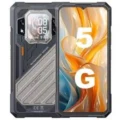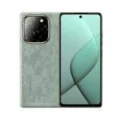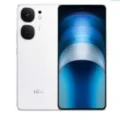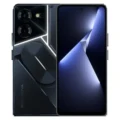Apple iPhone 3G





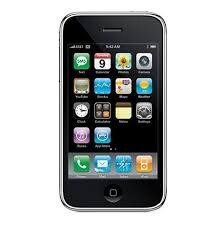
- : 128MB RAM
- : 3.5" 320x480 pixels
- : 1220mAh Li-Ion
- : 2MP No video recorder
The Apple iPhone 3G, released in 2008, marked a pivotal moment in the evolution of smartphones. Combining cutting-edge technology with a sleek design, the iPhone 3G quickly became a trailblazer in the mobile industry. As a vintage device, it holds nostalgic value for tech enthusiasts and collectors.
The iPhone 3G introduced 3G network support, enhancing internet speeds and providing a smoother browsing experience. Its 3.5-inch display boasted vibrant colors and crisp resolution, setting a new standard for visual excellence in its time. The device also featured a 2-megapixel camera, allowing users to capture memories with clarity.
Running on iOS 2, the iPhone 3G delivered a user-friendly interface, enabling seamless navigation and access to a variety of applications. The App Store, a revolutionary addition, allowed users to expand the phone’s functionality by downloading a myriad of apps, ranging from productivity tools to entertainment options.
In terms of design, the iPhone 3G retained Apple’s signature minimalistic aesthetic. Its curved edges and slim profile not only contributed to its stylish appearance but also made it comfortable to hold. The device came in multiple storage capacities, providing users with options to suit their needs.
Despite being an older model, the iPhone 3G remains a sought-after collector’s item. Its timeless design and historical significance make it a prized possession for those who appreciate the evolution of mobile technology. If you’re searching for a piece of tech history, the Apple iPhone 3G is a compelling choice, representing a milestone in the progression of smartphones. Explore the possibilities of this iconic device and relive the era when mobile technology took a giant leap forward.
Specs
Network
| 2G Network GSM 850 / 900 / 1800 / 1900 - SIM 1 & SIM 2 (dual-SIM) CDMA 800 / 1900 |
GSM 850 / 900 / 1800 / 1900 |
| 3G Network |
HSDPA 850 / 1900 / 2100 |
| Speed |
HSPA |
LAUNCH
| Announced | November, 2025 |
| Status |
Discontinued |
BODY
| Dimensions | 115.5 x 62.1 x 12.3 mm (4.55 x 2.44 x 0.48 in) |
| Weight | 133 g (4.69 oz) |
| SIMs SIM (Subscriber Identity Module) is a small card that contains mobile network subscriber's account information. This allows the phone using the card to attach to a mobile network. The SIM card is most commonly associated with GSM and UMTS mobile networks. Moving a SIM card from one phone to another allows a subscriber to switch mobile phones without having to contact their mobile network carrier. SIM cards can also be used by a phone to store limited amounts of data, such as phone numbers and text messages. |
Mini-SIM |
Display
| Display Type Display Technology => A number of display technologies and types used in mobile phones => TFT (Thin Film Transistor), IPS (In-Place Switching), OLED (Organic Light Emitting Diode), AMOLED (Active-Matrix Organic Light-Emitting Diode), Super AMOLED (an even advanced version of AMOLED), Resistive Touchscreen (Resistive touchscreens contain two layer of conductive material with a very small gap between them which acts as a resistance), Capacitive Touchsceen (Capacitive touchscreen technology consists of a layer of glass coated with a transparent conductor) | TFT |
| Size | 3.5 inches, 36.5 cm2 (~50.9% screen-to-body ratio) |
| Resolution | 320 x 480 pixels, 3:2 ratio (~165 ppi density) |
| Protection Display Protection => Gorilla Glass is a special alkali-aluminosilicate glass shield with exceptional damage resistance that helps protect mobile displays from scratches, drops, and bumps of everyday use, It is always better to go for a smartphone with Gorilla Glass for that added protection and peace of mind. | Corning Gorilla Glass, oleophobic coating |
PLATFORM
| Operating System OS => Every computer system run on a base software called Operating System (OS). Operating System controls all basic operations of the computer (such as smartphone, PDAs, tablet computers and other handheld devices). The Operating System allows the user to install and run third party applications (apps), apps are used to add new functionality to the device. | iOS, upgradable to iOS 4.2.1 |
| CPU CPU (Central Processing Unit) mostly known as processors, CPU processes instructions in order to carry out certain functions that make your device operate properly. Processors are often described as the brain of computers, smartphones and tablets, Smartphones and tablets rely on processors to carry out their every task, Processors are an incredibly important factor in selecting any type of computing device, including your smartphone. | 412 MHz ARM 11 |
| GPU GPU (Graphics Processing Unit) is a single-chip processor designed to rapidly manipulate and alter memory to accelerate the creation of images in a frame buffer intended for output to a display, This includes things such as lighting effects, object transformations, and 3D motion. | PowerVR MBX |
MEMORY
| Card Slot Memory Card Slot is a special slot for inserting a memory card. Memory cards allow you to expand the phone's built-in memory, A memory card (sometimes called a flash memory card or a storage card) is a small storage medium used to store data such as text, pictures, audio, and video, for use on small, portable or remote computing devices such as mobile phones, mp3 players, digital cameras. | No |
| Internal | 8GB 128MB RAM, 16GB 128MB RAM |
MAIN CAMERA
| Cameras Specs Today’s smartphones come equipped with a very comprehensive set of camera related specifications. Our smartphone, for many of us, has become our primary camera due to it being the one we always have with us. |
2 MP |
| Video | No |
SELFIE CAMERA
| Cameras Specs Today’s smartphones come equipped with a very comprehensive set of camera related specifications. Our smartphone, for many of us, has become our primary camera due to it being the one we always have with us. | No |
SOUND
| Loudspeaker | Yes |
| 3.5mm jack |
Yes |
COMMS
| WLAN |
Wi-Fi 802.11b/g |
| Positioning |
GPS, A-GPS |
| Bluetooth Bluetooth is a wireless communications technology for exchanging data between mobile phones, headsets, computers and other network devices over short distances without wires, Bluetooth technology was primarily designed to support simple wireless networking of personal consumer devices. | 2.0, A2DP (headset support only) |
| Infrared Infrared connectivity is an old wireless technology used to connect two electronic devices. It uses a beam of infrared light to transmit information and so requires direct line of sight and operates only at close range. | |
| USB | 2.0 |
| NFC NFC (Near field communication) is a set of standards for smartphones and similar devices to establish peer-to-peer radio communications with each other by touching them together or bringing them into proximity, usually no more than a few inches. | |
| Radio |
Features
| Sensors Sensors are electronic components that detects and responds to some type of input from the physical environment. The specific input could be light, heat, motion, moisture, pressure and location, The output is generally a signal that is converted to use in computing systems, a location sensor, such as a GPS receiver is able to detect current location of your electronic device. |
Accelerometer, proximity |
BATTERY
| Battery Type Battery Type => Cell phones run on various kinds of batteries depending on the manufacturer, phone size or shape and features. There are basically four types of cell phone batteries => Lithium Polymer, Lithium Ion, Nickel Metal Hydride and Nickel Cadmium. | Li-Ion (Lithium Ion) |
| Capacity Battery Capacity is a measure (typically in Amp-hr) of the charge stored by the battery, and is determined by the mass of active material contained in the battery. The battery capacity represents the maximum amount of energy that can be extracted from the battery under certain conditions. | 1220 mAh |
| Placement | non-removable |
MISC
| Colors |
Black(8/16 GB), White (16 GB) |
| Model | iPhone1,2 |
| SAR SAR (Specific absorption rate): Each GSM handset has a radio transmitter and receiver in order to operate in the wireless GSM network. That transceiver is manufactured so that when used next to the ear and when worn on the belt, it won't exceed the limits for exposure to radio frequency energy set by the authorities.The authorities in question here are the Federal Communications Commission (FCC) of the U.S. Government, Industry Canada of the Canadian Government (IC), and the Council of the European Union. |
0.52 W/kg (head) 1.29 W/kg (body) |
| SAR EU Each GSM handset has a radio transmitter and receiver in order to operate in the wireless GSM network. That transceiver is manufactured so that when used next to the ear and when worn on the belt, it won't exceed the limits for exposure to radio frequency energy set by the authorities.The authorities in question here are the Federal Communications Commission (FCC) of the U.S. Government, Industry Canada of the Canadian Government (IC), and the Council of the European Union. |
0.56 W/kg (head) 0.23 W/kg (body) |
| Price |
About 90 EUR |
TESTS
| Loudspeaker | Voice 66dB / Noise 62dB / Ring 71dB |
Reviews
Disclaimer Note
We strive to maintain accurate and up-to-date content on our website for general information purposes only. Please refrain from using the material for business, legal, or any other decisions.






